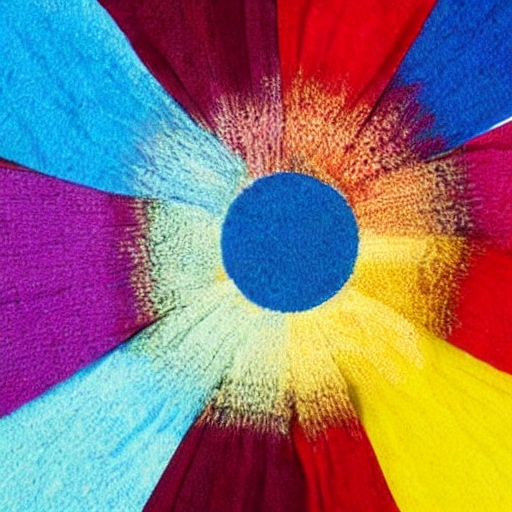In a previous post, we talked about The Power of Color Theory in Knitting and Crocheting. Now we are delving into the intricate world of color psychology to unveil a realm where hues aren’t just visual stimuli but potent emotional triggers. In this extensive exploration, we’ll navigate the depths of color psychology, deciphering how colors influence our perceptions, emotions, and even decision-making processes. Join us on this enlightening journey through the spectrum, where each hue is a brushstroke painting the canvas of our emotions.
The Fundamentals of Color Psychology
The Essence of Warm and Cool Colors
At the heart of color psychology lies the dichotomy of warm and cool tones. Warm colors, like reds, oranges, and yellows, elicit feelings of energy and excitement. Conversely, cool colors, encompassing blues, greens, and purples, are associated with calmness and introspection. This fundamental understanding forms the basis for the emotional impact colors have on individuals.
Cultural Dynamics
Colors carry cultural baggage, with meanings that vary across societies. White, for example, symbolizes purity in Western cultures but signifies mourning in many Eastern cultures. Navigating the cultural labyrinth adds layers of complexity to the study of color psychology, revealing the nuanced ways different societies interpret and respond to colors.
Individual Responses and Subjectivity
While cultural norms provide a framework, individual experiences and preferences contribute significantly to color responses. The emotional reaction to a particular color can be deeply personal, with past experiences shaping associations and influencing emotional responses. Understanding this subjectivity is key to utilizing color psychology effectively.
The Emotional Tapestry of Colors
Red: Dynamic Force
Red, a color synonymous with passion and power, holds a dynamic force in the emotional spectrum. It stirs strong emotions and is often strategically used to demand attention. From branding to signaling urgency, red is a multifaceted hue that commands both visual and emotional impact.
Blue: Serene Horizon
Blue, the tranquil color of the sky and ocean, exudes calmness and trust. Its association with stability and professionalism makes it a favored choice in corporate branding, aiming to instill a sense of reliability and competence. Understanding the emotional landscape of blue unveils its powerful influence on our psyche.
Yellow: Radiant Optimism
Yellow, the color of sunshine, radiates joy, optimism, and energy. It’s a hue that grabs attention and creates a warm, inviting atmosphere. Yet, a delicate balance is needed, as excessive use can lead to feelings of agitation. Deciphering the emotional nuances of yellow is key to maximizing its positive impact.
Green: Nature’s Harmony
Green, the color of nature and growth, brings a sense of tranquility and balance. Often associated with eco-friendliness and health, it offers a versatile emotional palette. Darker greens can evoke a sense of wealth and prestige, further expanding the emotional range of this harmonious color.
Purple: Regal Sophistication
Historically tied to royalty, purple embodies luxury and sophistication. Its mysterious and spiritual undertones make it a captivating choice. In branding, purple communicates elegance and exclusivity, delving into the emotional intricacies of status and opulence.
Black and White: Yin and Yang
Black and white, devoid of color yet powerful in contrast, play pivotal roles in design. Black signifies sophistication and elegance, while white embodies simplicity and purity. Together, they create a visual yin and yang, exploring the emotional depth within simplicity and contrast.
As we conclude this journey through the spectrum of color psychology, it becomes evident that colors are not mere visual stimulants; they are emotional orchestrators. From the warmth of red to the cool serenity of blue, each hue weaves into the emotional tapestry of our experiences. Armed with this knowledge, we can navigate the world with a deeper understanding of how colors shape our perceptions, emotions, and interactions. The study of color psychology is an ongoing exploration, an unraveling of the emotional threads that connect us to the vibrant world of hues.
